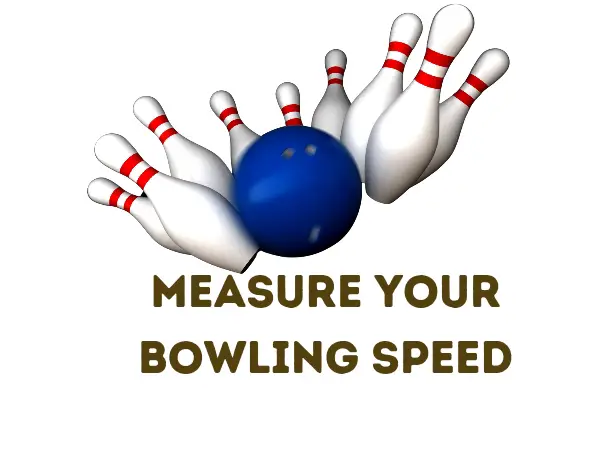
Your days of not understanding bowling ball speed are over! As a bowler, you should be aware of every major to minor detail and that includes your ball speed. But how do you measure it? Yeah, in some bowling alleys, they display your ball speed. But you can’t be sure how accurate that is. For those of you who would like to learn to measure your bowling ball speed manually, listen up! Today, I’m going to show you how to measure bowling ball speed without making things too complicated.
How to Measure Bowling Ball Speed?
So if you noticed, most bowling centers do display your ball speed after each delivery. You also might have noticed that these speeds vary from center to center. One reason behind this discrepancy has to do with where the speed of the ball is being measured. If the speed is measured from further down the lane, a slower ball speed will clock in. Conversely, the closer the ball is to the foul line, the faster your ball is going to be measured. The speed of your ball will always be fastest at the point of release, and with every roll, it loses speed.
So here’s how you manually measure your ball speed.
First, you need to capture how many seconds it takes for your ball to hit the pins starting from the point of release till the moment it makes contact with the headpin. You can do this in one of two ways using a stopwatch or a smartphone with its video feature.
You can set up your video recording gear on a stand and record yourself shooting it or if you’re lucky to get some assistance, ask them to record your shot for you. Optionally, they can just observe your ball delivery and record your timing using a stopwatch.
Let’s assume, you have rolled down a ball and the time duration from the point of release till it hits the headpin is 2.5 seconds. Now, you need to perform some basic calculations.
We know, the distance from the foul line to the pins is 60 feet.
And, the ball took 2.5 seconds to travel that 60 feet distance.
Remember, you want the result in miles per hour; not feet per second. So let’s perform some conversions.
1 mile = 5280 feet
1 hour = 3600 seconds
So to find your average ball speed in miles per hour, you have to divide 60 feet by the travel time and then multiply that by 3600 seconds per hour. Now take the result, and divide it by 5280 feet per mile which will give you 16.36 mph.
60 ft ÷ 2.5 sec = 24 ft/sec
24 ft/sec × 3600sec/h = 86400 ft/h
86400 ft/hr ÷ 5280 ft/m = 16.36 mph
I know it sounds like a lot of number crunching, but it’s fairly easy to do. What if you are looking for something easier? Well, just use an online bowling ball speed calculator to find out what’s your speed in bowling. In most of these calculators, you have to simply plug in your travel time into the “time of thrown ball” box. Input the number 60 in the distance or feet box, if it isn’t there already.
Now, all you gotta do is hit the “calculate” button. You will immediately see your answer in miles per hour. Yeah, it’s that easy!
Well, now that you know how to measure your bowling ball speed, check that against the speed gun at your bowling center and see how close they are to your actual bowling ball speed.
Is it better to bowl fast or slow?
Okay, I’m probably gonna start the fire by stating that a high ball speed can assure more strikes. Now, hold on, hold on! Don’t be mad at me. The speed of your ball is the fastest at the point of release. As the ball travels down the lane, friction from the lane will cause your ball to lose speed which explains why the ball gets slower as it approaches the pins.
So it’s better to start with a faster speed at the beginning as some of the speed eventually get lost during the ball travel. Plus, you can’t just deny the advantage of amazing pin action. If you start too slow, your bowling ball won’t have enough speed and force to hit the pins hard. Forget about getting strikes.
So what if you have an average speed and you are satisfied with your current average? Don’t sweat it! It is a common misconception that a higher ball speed is going to ensure better gameplay. Bowlers with high or slow speeds have separate advantages. You can shoot with precision when the ball speed is slow and end up having a nicer hook motion. But it comes with the price of not having enough pin action.
Bowling ball weight also matters for high speed or low speed. But it depends on what your ball suits you. arrying heavy bowling ball or lighter bowling ball
Conclusion
If you feel like you are missing something in your shots and can’t seem to figure out what it is, I recommend you have a look at your bowling ball speed. For that, measure your bowling ball speed the way I have stated above. If necessary, take help from your other bowling friends or ask a pro shop operator to do it for you. For further queries, contact me. If you end up having a slower ball speed, don’t worry too much. Make adjustments only if it is necessary. So, good luck, and enjoy the beauty of this magical sport! See ya!

Passionate Bowler and Bowling Enthusiast
Jess Pinelli is a dedicated bowling enthusiast with a deep love for the sport that spans over 6 years. With numerous strikes, spares, and a few gutter balls under hes belt, he has honed his skills on lanes across the country. Pinelli’s journey in the world of bowling has been a remarkable one, from casual weekend games with friends to competitive league play and even a few local tournaments.
Driven by her passion for the game, Pinelli decided to channel her expertise and knowledge into the digital realm, becoming a prolific author on this bowling website. She’s your go-to source for everything bowling-related, from mastering the perfect hook to choosing the right bowling ball and even navigating the world of bowling etiquette.
When she’s not busy writing informative articles or reviewing the latest bowling gear, you’ll likely find Pinellis at her favorite local bowling alley, helping newcomers improve their game or enjoying some friendly competition with fellow bowlers. She firmly believes that bowling is not just a game but a community, and she’s committed to fostering that sense of camaraderie both online and offline.



